Estimated reading time: 11 minutes
Have you ever had a broken branch in your fruit tree?
It happens all the time, and usually, the offending branch is just removed when the tree is pruned. It pretty much fits into the ‘remove dead and diseased wood’ mantra that is part of our foolproof pruning method.
Or does it?
When can you repair a broken branch in your fruit tree?
What if it were possible to repair your fruit tree, instead of removing broken branches?
In many cases, this is possible and can help retain valuable fruit-growing parts of the tree. More importantly, it can help to preserve the structure of your tree.
A broken branch can often be put back together as long as both pieces are still joined to the tree and there is a connection between them.
There must be some undamaged wood and bark in place. This is necessary to maintain the flow of water and nutrients from the roots to the broken piece to keep it alive.
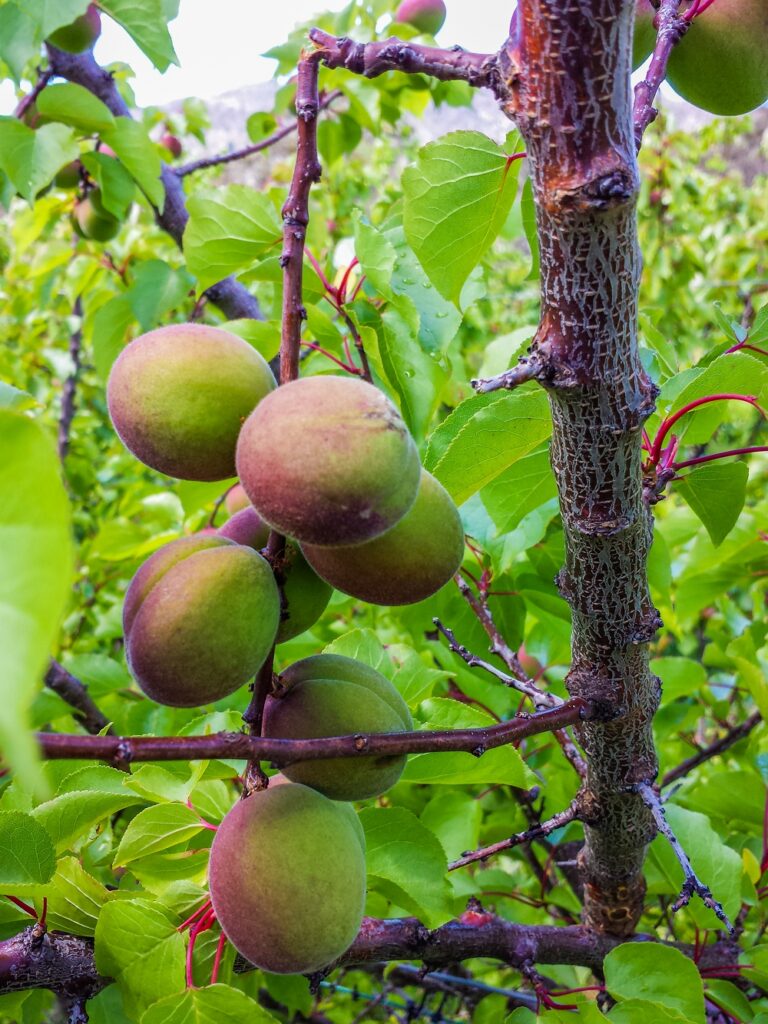
When are broken branches beyond repair?
It’s usually not worth repairing small branches (laterals) that have broken as a result of carrying too much fruit, like the apricot tree above.
It’s much easier for a fruit tree to replace small laterals like these than large structural branches.
By far the better strategy is to prevent them from breaking in the first place by doing enough thinning!
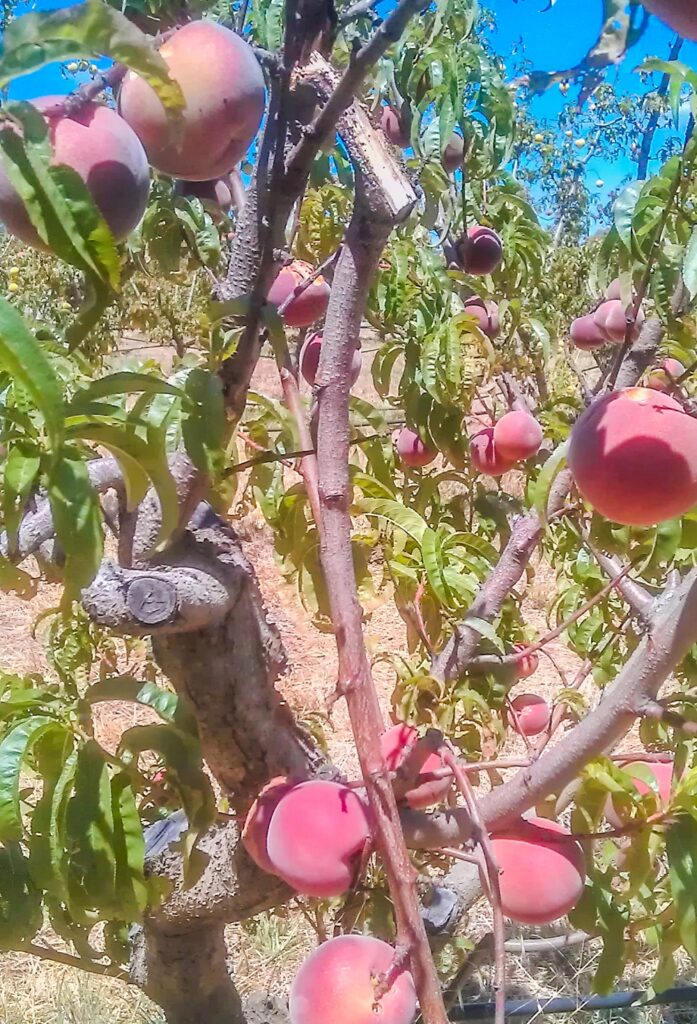
Branches that have broken due to disease (like the photos above and below) are also not candidates for repair.
In this case, it’s a matter of reverting to the pruning principle of ‘remove dead and damaged wood’.
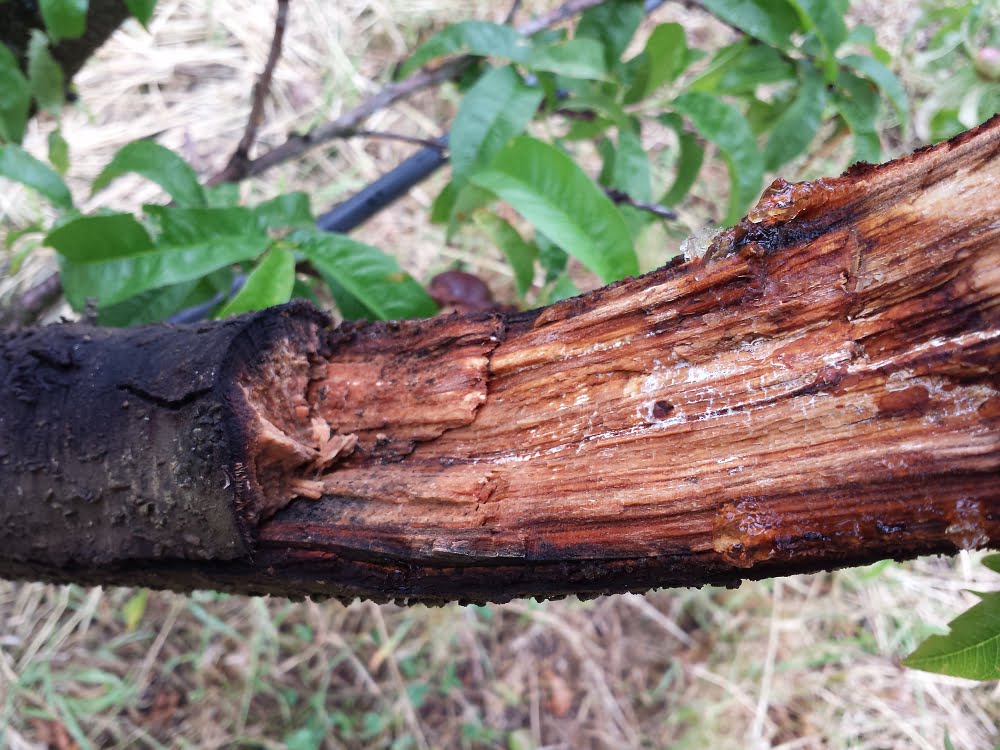
Do the broken pieces still match?
The other prerequisite for a repair is whether the two broken pieces will fit neatly back together.
Broken branches heal in much the same way as wood heals when you do a graft. The two pieces must be held firmly together, and bound firmly in place.
This successfully grafted apricot (below) shows how well two pieces of wood can heal together when they’re well matched.
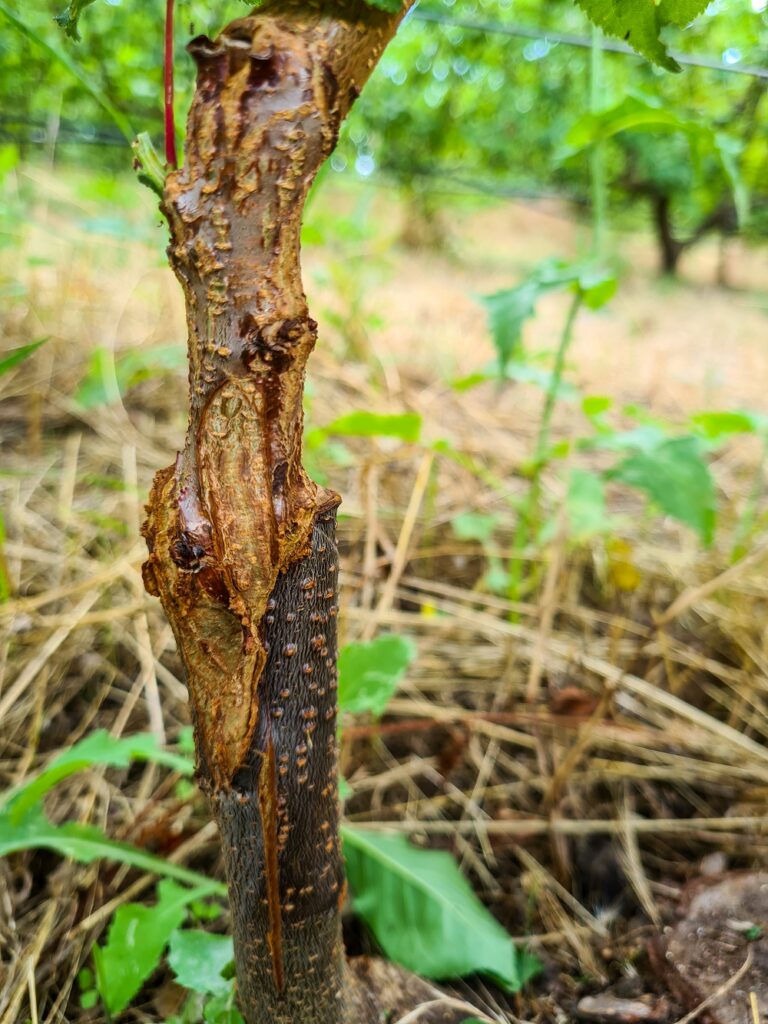
If the fit isn’t perfect you may be able to prune away some jagged pieces first to get a neat fit. However, this is not too crucial.
As long as there are healthy parts of wood on either side of the wound touching when you bind them together, there’s a very good chance it will heal.
Can you repair old breaks in fruit tree branches?
If you don’t discover the break immediately, it may have already started to heal in the broken position. In this case, it can be a bit harder to get a really tight seal.
As long as both pieces are still alive and healthy, it’s still worth trying a repair. It’s a step-by-step process:
- Pull the two pieces towards each other and bind them as close together as you can get them.
- Don’t pull them so tight that you’ll create more damage by putting too much tension on a branch and causing it to split somewhere else.
- If you can get the two sides of the split to be in contact with each other, great! If necessary, carefully trim away a little of the bark to create contact between the wood of each side, with no bark in the way.
- Support the two sides with rope or baling twine if necessary to help them stay close together.
- Come back in a month or so, remove the bandage, and see if you can get the two pieces to fit together more tightly, and re-bandage.
- Repeat until you’ve got a nice fit, and the wound is healed.
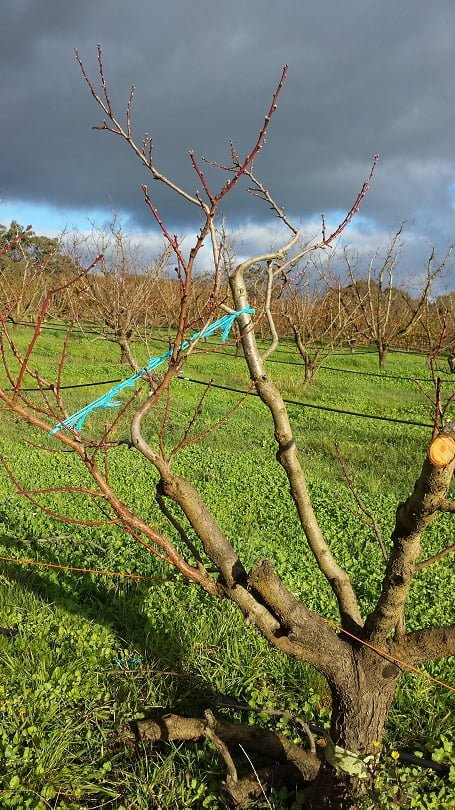
Repairing large splits in your fruit tree
Here’s another example of a similar technique used to repair a trunk which has split in half. In this case, we’ve used cable ties (also called zip ties) to get a tight seal between the two broken pieces.
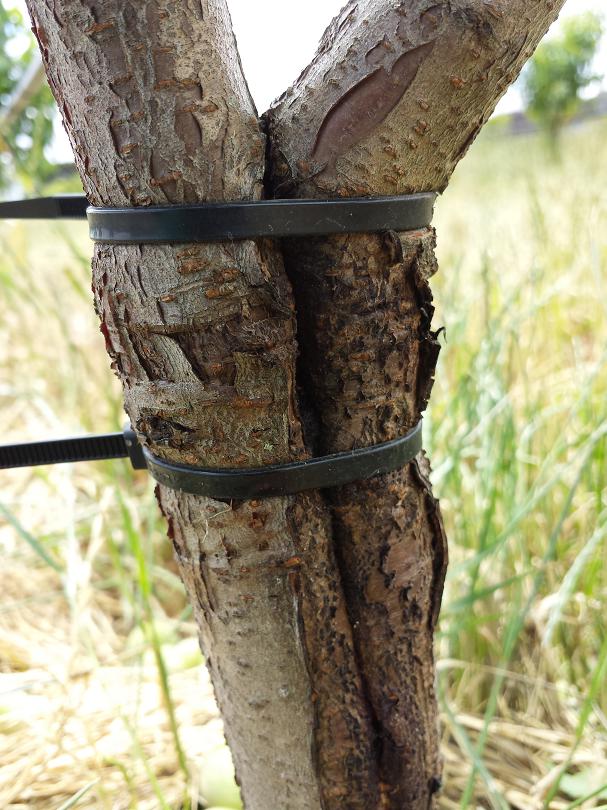
As long as there’s some exposed wood (i.e. the wound has not healed and created new bark on the broken surfaces) this technique can work well. On a big break like this, the two sides might need to be held firmly in place for a year or two.
However, as with grafting, it’s important to make sure the bandage doesn’t provide a strangulation point. The diameter of the branch (or in this case, trunk) naturally expands as it grows, even while the split is healing. Check it every six months or so to see if it needs replacing.
Repairing fruit trees can save years of waiting for the tree to replace the damaged wood. It’s well worth your effort!
Related Articles
Know the parts of your fruit tree before you start pruning
Learning the different names for the parts of your fruit tree before you start pruning will help you to understand what you’re doing.
How to remove fruit tree suckers…the right way
Fruit tree suckers should be removed every year or they cause problems, but it’s important to do it the right way.
4 ways to use fruit tree prunings
Fruit tree prunings are often considered as ‘waste’ and even sent to landfill. Here’s three ways to capture the nutrient from your prunings.





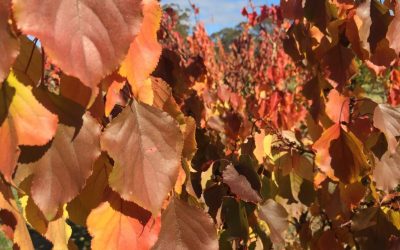


Have you ever thought about publishing an e-book or guest authoring on other
websites? I have a blog based on the same ideas you discuss and
would love to have you share some stories/information. I know my visitors would appreciate your work.
If you’re even remotely interested, feel free to send me
an e-mail.
Hi, thanks for the interest. We’re always up for new opportunities – what’s the link to your blog? The good news is we’ve already published some ebooks, and a bunch of online short courses for fruit growers to get the skills they need – here’s the link if you’d like to have a look: https://growgreatfruit.com/online-courses/
I repaired a lateral on my stepover apple with Sellotape. Very successful!
Haha, that’s what we’re talking about!
Thanks – that’s a useful and inspiring post. We’ve had a few cases over the years and I’ve assumed I need to remove the broken branch etc.
Great, thanks for the feedback Brian, hopefully you’ll be able to save some future branches if it happens again!
Hi Katie. Sadly my cows have damaged very badly 6 stone fruit trees I planted only last year. Lovely green foliage last week now broken chewed trunks. Hoping that going into winter and with an established root system I might be able to save them – shoukd I leave them where they are or pot them up so I can keep an eye on them?
Hi Fiona, How frustrating! Animals in the orchard can be so great, until…they’re not. Our advice would be to prune off the damaged parts of the trees but leave them in place if you can and work on better exclusion for the cows, especially while they are so young – is that possible in your circumstance? Otherwise, moving them elsewhere (where they can be safe from cows) would be an option, but you’d want to have a plan in place to make sure you’re moving them to a good spot. You might find this other blog about animals & fruit trees useful in the meantime. – Meg from Grow Great Fruit Team.
Thanks Meg. I completed the fencing around the six trees, pruned them so all breaks were neat and tidy and painted ends with pruning paint. All damage was above the grafts. Taped up one break. Replenished the soil around their bases, topped with mulch and popped tree barriers around each one. I figured at least going into winter was an advantage and they have had a year of root establishment. Fingers crossed